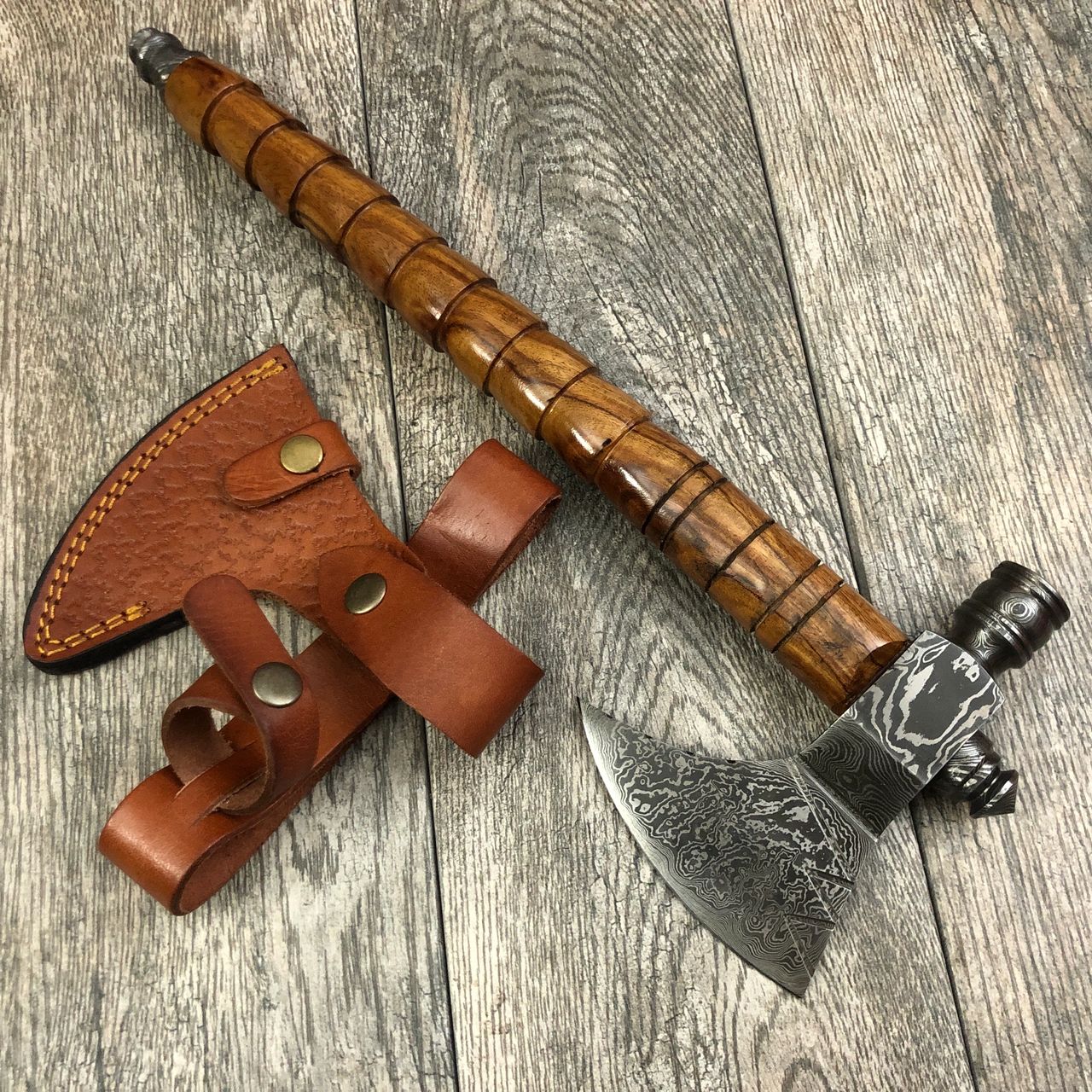Hatchets & Tomahawks | Ash Gears
History of the Tomahawk:
A tomahawk is a single-handed native North American instrument that resembles a hatchet but has a straight shaft. Tomahawk was a version of the White American Algonquian term that was introduced into to the English vocabulary as early as the 17th century. They were part of a general instruments used by European and North American colonists in the same manner thrown or hand-to-hand weapons were used. Metal tomahawk heads were fashioned from Royal Fleet boarding axes. It was used to trade with Native Americans in return for food, supplies, and other items. Long before Europeans arrived at the American continent, the Algonquians created tomahawks. Previously, the indigenous utilized stones, which they attached to wood handles and tied with rawhide strips or bands. They were originally designed for use as weapons, but they've since been adapted for common jobs like cut, chopping, and hunting. Tomahawk However, the entrance of European on the region changed everything. The Europeans were fascinated by the Native Americans' resourcefulness as they spotted the tomahawk's potential utility. They went on to develop a metal blade to replace the stone utilized in the tomahawk's creation. The advent of the knife blade was a watershed moment in the little tool's usefulness. This was because metal did not shatter as quickly as stone did, and the latter could be formed or produced for various applications, making it the obvious winner. Use of stones to make tomahawks was swiftly abandoned in favor of the usage of metal. The Native Americans then devised a tomahawk's poll, which comprised a spike or pipe, as well as a hammer. Pipe tomahawks, which have a sunken shaft and a basin on the poll, are a variation of the tomahawk. This variant was manufactured by American and European artists for diplomatic gifts and commerce with the tribes. The size of a tomahawk, as well as other visual clues such the shaft being now and over 24 inches in length and the cutting edge being no less than 4 inches, distinguishes it from a hatchet. Equipment such as a spike or a hammer swells up from the backside of the blade or pole; however, there are exceptions.
History of the Hatchet:
A hatchet – a human or one-handed instrument with a sharp tool on top of a fairly short grip or used for splits and chopping wood – is a word originating from of the Old French and a pint sized variant of axe. Other edges of the blades has a hammerhead on it, which is used for hitting. The blade side is used to split or chop tiny pieces of wood, firewood, or cut off small branches, whilst the hammer side is used to drive pegs into the ground or hammer nails into wood. It may be used to break up boulders, tent stakes, and other items that require a striking blow. It may also be used to make Travis, clear paths, cut animals for cooking, and a variety of other things. The best method to tell the difference between a hatchet and an axe is to glance at the metal head. The striking characteristic that separates it from a hand axe is the hammerhead opposing the blade. As a result, stating that what a hatchet does have a razor or sharpened edges on one side of the its metal head as well as a hammer on the other is still true. The latter has a broad, flattened surface that does not resemble those of a hatchet, but it is still a useful tool to have about the house. Hatchet This rather flexible and compact instrument are used including one hand, as opposed to the axe, which requires two hands to strike with maximum force. Despite its short handle, which means that you will have a less amount of force at the edge, it can be used in confined locations and only takes a tiny bit of backstroke when comparing to an axe. They were made with a few of goals in mind. Another of them is for supplying customers with wood to build and maintain a fire. Although hatchets are tiny and resemble a scaled-down axe, they may be used to chop big amounts of wood as well as cut saplings or kindling. In actuality, a hatchet is merely a light-weight axe. According to research, the initial purpose of axe manufacturing was to act as a walk from a knife blade for cutting, chopping, and slicing. When processing corpses, they can be utilized to cut through cartilage or bone. They can also come in handy if you happen to stumble across a hazardous animal that could harm you. Although it is uncommon for wild creatures to come onto a camping area or route, wolves or grizzlies have been known to corner or encircle people. When such creatures try to attack you, and you have a hatchet, you may defend yourself and avoid being wounded.


Comments
Post a Comment